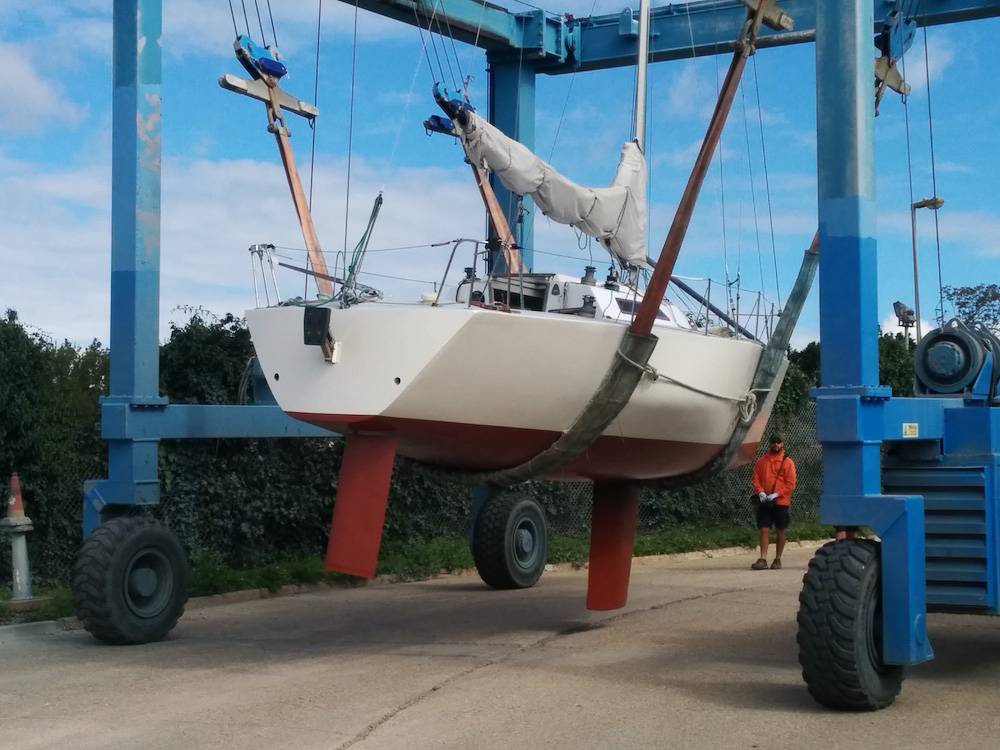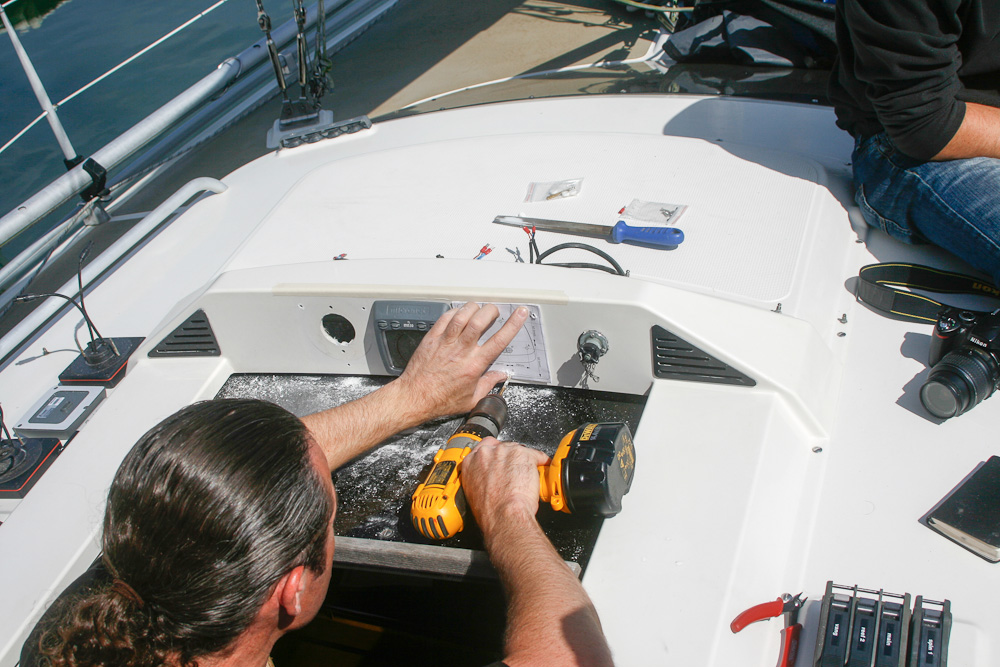Boat ownership costs and budgeting
How much does it cost to run a boat? Find out with the boats.com guide to budgeting for boat owners.
When buying a boat, it’s essential to fully consider the costs of owning that vessel. This is far more extensive than the listed price when you buy: boat ownership costs can quickly add up when you consider maintenance, lifts in/out, mooring fees, fuel, electricity, safety equipment, etc. Periodic haul-out and boatyard fees are unavoidable (even if you have a bilge keel vessel that can dry out for everyday maintenance), but careful planning can minimise these. Moorings are often the biggest annual cost of boat ownership. The more convenient the location and facilities, the more you can expect to pay. Marine electronics are to be more reliable than in the past. However, it can still be difficult to estimate the lifespan of such systems and they are tending to become increasingly complex.
But although it can be feel pricy, once you compare all the nights spent aboard, days out, and holidays afloat to other accommodation and travel expenses, you may find that boat ownership still comes out ahead when it comes to budgeting.
An oft-quoted figure is that you should budget for a certain percentage – usually around 20% – of the boat's value to cover annual costs. On face value, this can make sense – the most expensive boats are likely to be kept in the most expensive marinas, while lower-priced craft will gravitate towards progressively cheaper moorings, and the bigger the boat, the more maintenance is likely to cost.
However, several factors have changed to make this rule of thumb one that can easily mislead potential owners. One of the biggest factors to bear in mind is that the price of second-hand boats has generally increased over the last decade, especially in the last few years. The COVID-19 pandemic is often considered a significant contributor to this trend, as people have been looking for more alternative lifestyle options and experienced an inflated desire to get out after so long stuck indoors.
That said, boat prices will vary depending on the type of boat, its condition, and the market, and it’s still certainly possible to grab a bargain - especially if the boat has been on the market for a while and/or the owners are looking for a quick sale.
This inflation in boat value can make traditional budgeting challenging. If you’ve brought your boat on finance, you not only have to factor in mooring costs and maintenance, but repayments on your loans must also be considered, alongside other expenses such as fuel, electricity, upgrades, food, safety equipment, and more.
Moorings and insurance
Moorings are one of the most easily quantifiable costs when it comes to boating, as you’ll be given a set price that is unlikely to change significantly during your stay. However, you may need to do some legwork if your only priority is to save some cash and you’re not too fussed about mooring your boat in a glossy full-service marina.
That said, it doesn’t mean cheap mooring is impossible to find - especially if you’re not worried about access to facilities or having a walk-ashore mooring. If you’re able to dry out, your options for cheap moorings will be even broader. It’s worth speaking to sailing clubs in your desired area in addition to marinas, as they often offer the best prices and may even be willing to negotiate to help you find something that suits your budget.
To find out more about different types of moorings, read our guide to finding a boat mooring.
Insurance is rarely a significant expense compared to the other costs of owning/running a boat and is often significantly cheaper than for a car of considerably lower value. For budget-conscious boat owners, third-party-only cover can be found from as little as £100 - £300 per year for small boats.
On the other side of the market, comprehensive cover for large and/or valuable vessels can range from £1,000 to over £5,000 per year.
In addition to the value of your boat and the extent of coverage you want to take out, the cost of boat insurance can vary based on some of the following factors:
Maintenance
This is much more of a grey area, and costs will vary hugely between different boats and even between different owners of identical boats. If you plan on doing all but the most technical work yourself, costs will be significantly lower than if a boatyard, marine engineer, or sailmaker is engaged to carry out the work.
Even then, significant amounts of money and inconvenience can be saved by ensuring you carry out routine checks diligently, including engine checks, rigging inspections, and examining sails for the first signs of damage. The old saying that a “stitch in time saves nine” is just as applicable today as it was during Nelson’s time, so if you spot an impending problem before significant damage is caused, repairs can be quick, simple, and less likely to break the bank.
That said, there are some tasks you simply won’t be able to avoid, including the need to replace sacrificial anodes and re-apply antifouling. The cost for this type of maintenance can vary, but you can keep prices down by doing the jobs yourself. Antifouling paints usually cost between £30-£80 per litre, although this can vary depending on the brand and type. For a 30ft yacht, you’ll probably need around 2-3 litres. Don’t forget that most manufacturers recommend at least two coats per season.
If you don’t want to do the antifouling yourself, you’ll need to engage a boat yard to do the work for you. In this instance, the cost will vary wildly depending on the yard’s labour fees. You’ll also need to incorporate the cost of a haul-out, dry standing, and lift-in when budgeting for this type of work, which can quickly add up.
Many owners of cruising boats try to make antifouling last a couple of seasons, so that they can reduce the number of haul-outs necessary.
The downside to doing this is that, by the end of the two seasons, the boat is likely to have developed sufficient growth that will slow down the boat. While this might not be much of a problem for cruising sailboats, power boat owners will discover that the extra fuel used to propel the vessel will far outweigh aunty savings gained by delaying a haul-out.
Another way to save money on maintenance is by booking a haul out during the summer when boat yards tend to be quiet and frequently offer significantly reduced prices, especially on dry storage.
Boat depreciation
Predicting the future has never been easy. The days in which you could be reasonably confident that inflation would be sufficiently high for a well-looked-after second-hand boat to maintain its cash value have long gone.
So, the big question is how much do we need to budget for depreciation? That’s a much harder one to answer, although a good starting point is that there are plenty of examples of boats that, once all the extras are priced in, lose around 50 per cent of their initial value over their first six or seven years. Beyond this age, the figures become more muddied, partly because once a boat is 10 years old, some owners will have already started updating equipment while others will have fallen into a state of (expensive) disrepair.
For older designs with relatively small accommodation compared to their overall length, most of the boat’s value may be in the equipment and fittings – the engine, rig, sails, electronics, etc. If these big-ticket items need replacing, the boat may be worth very little. Of course, if you buy this sort of boat at a price that reflects its upgrade requirements, you won’t be paying much depreciation on the vessel itself, although you will need to budget to replace the equipment periodically.
If you want to sell your boat at the best price, check out our articles on how to upgrade and improve your powerboat or how to upgrade and improve your yacht before selling. Remember: the better condition your vessel is in when it comes to selling, the higher the price she’ll attract.Upgrading and replacing boat systems
It can be very difficult to predict the likely service life of most marine equipment. However, building up a contingency fund to pay for essential replacements is always worthwhile.
I use the following rough estimates to budget for potential ‘big ticket’ expenditures based on mid-range equipment and diligent maintenance:
Note that differing patterns and amounts of use, maintenance schedules, and quality of original components will mean that there can be a wide variation in the life of each item between different vessels.
In some cases, items may last considerably longer than these timespans; for instance, there are still many boats with engines and spars that are 30 or 40 years old, but most will have been changed or fully reconditioned by this time. In any case, this is one situation in which having a contingency fund that’s a little larger than might be necessary is never a disadvantage. You can learn more about this in our boat maintenance guide.Related reading
Whether you’re a first-time boat owner or seasoned pro, there’s always room to learn new tricks and tips to keeping your vessel ship-shape and avoiding more expensive maintenance issues down the line.
For more advice on how to look after your boat, check out our other guides to boat maintenance:
If you’ve recently purchased a boat and are looking for the best place to store her, you might also want to take a look at some of our mooring guides and marina reviews:
Finally, if you’re looking to sell your boat, you can do so right here at boats.com. You can also check out all boats for sale, including:
Editors Note: This article was originally published by Rupert Holmes in March 2022, most recently edited by Pippa Shaw in May 2025














